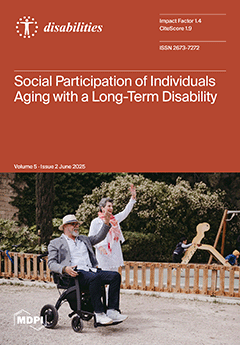This study examines strategies to enhance transport inclusivity and passenger satisfaction for persons with disabilities in public bus systems in the Philippines. Drawing on data collected through an online questionnaire from 396 persons with disabilities who responded across various regions in the country, this study investigates eight key factors affecting satisfaction: vehicle design, diverse seating options, sensory considerations, assistance services, safety measures, subsidies/discounts, accessibility, and communication and information quality. Structural equation modeling (SEM) was used to analyze the hypothesized relationships between these variables, passenger satisfaction, and intention to reuse public transport. The SEM results revealed that accessibility (β = 0.359,
p = 0.005), vehicle design (β = 0.248,
p < 0.001), diverse seating options (β = 0.485,
p < 0.001), safety measures (β = 0.3867,
p = 0.001), and subsidies/discounts (β = 0.447,
p < 0.001) significantly influenced passenger satisfaction. In turn, satisfaction had a strong positive effect on the future intention to use public transport (β = 0.760,
p < 0.001). However, sensory considerations (β = 0.163,
p = 0.225), assistance (β = 0.133,
p = 0.519), and communication and information quality (β = 0.171,
p = 0.345) were not statistically significant. The model demonstrated a good fit (chi-square/df = 4.03; SRMR = 0.078; NFI = 0.956), supporting the robustness of the proposed framework. These findings suggest that design-centered improvements and subsidies/discounts are critical to inclusive transport experiences, while overreliance on assistance may not guarantee satisfaction. This study recommends promoting autonomy through universal design, enhancing digital and physical accessibility, and increasing public awareness. These insights are intended to guide policymakers and transit authorities in creating a more inclusive, equitable, and user-driven transportation system.
Full article





